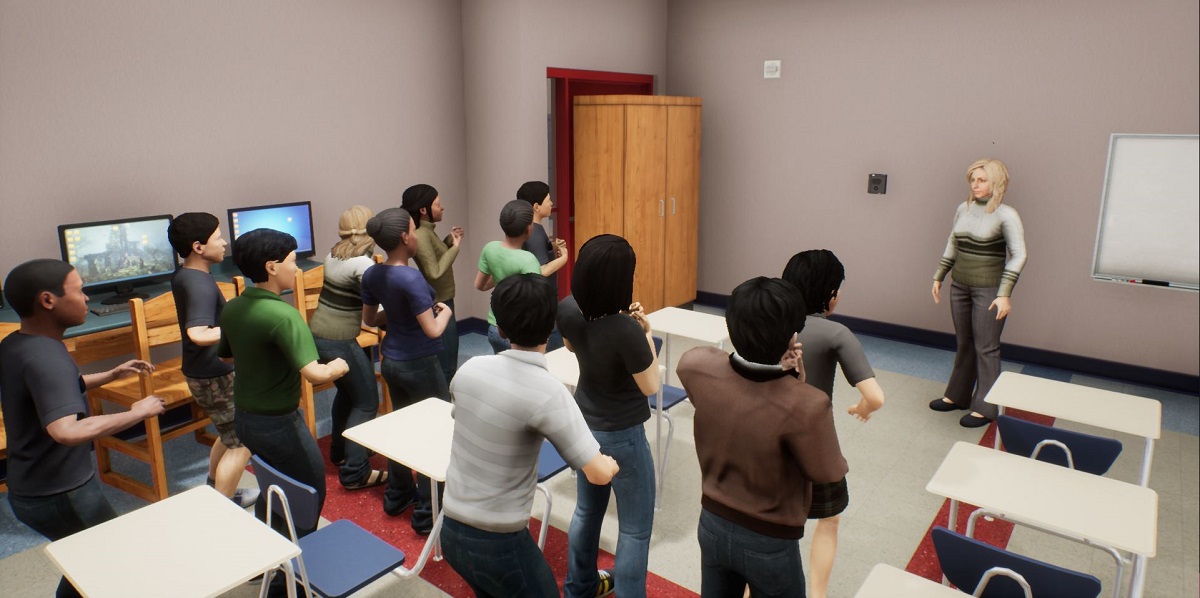The Department of Homeland Security (DHS) Science and Technology Directorate’s (S&T) Enhanced Dynamic Geo-Social Environment (EDGE) virtual training platform provides a safe, immersive environment where first responders, and now educators, can hone their skills and prepare for a multitude of incident responses. Built on the same video gaming platform as popular titles like Fortnite, EDGE was intentionally designed to be easily accessed, easily used, and easily integrated into agencies’ existing training protocols.
The first EDGE environment, a hotel-based training released in June 2017, was developed at the request of responders themselves, who sought resources to plan for Mumbai-style critical incidents or active shooter attacks. Because of the dynamic, user-driven nature of EDGE, responders of all disciplines can use EDGE to train for anything from arson to hostage negotiation to doing a sweep of the building prior to a VIP escort.
User feedback has been extremely positive, and it soon became clear that a second EDGE training environment could benefit not only first responders, but educators as well, who are the first line of defense against threats in schools. Released publicly in late 2018, the new EDGE school environment enables users to plan for the worst—say, an active shooter or a student threatening self-harm—or everyday incidents like parental disputes or medical emergencies.
1. New roles will be soon be added to the school environment for enhanced collaborative training.
Hot off the presses! New avatars are being built into to the school environment to add a number of new training opportunities, including arson, medical interventions, and more coordinated response to critical incidents. As with the EDGE hotel environment, the school will soon feature the fire service (and near true-to-life fire propagation), enhanced emergency medical services, dispatch, and unified command functions.
“You do have to interact and work with local law enforcement, fire departments, EMS,” said Lionel Hush, a West Orange, New Jersey school principal. “So to actually have the opportunity to train with these agencies…in the off chance there is an emergency, you’re better equipped. You’re better prepared. You know what to do. You know who to communicate with. They are familiar with your grounds, which is very important.”

2. EDGE’s instructor mode and robust after-action reporting offer a comprehensive learning experience.
EDGE is neither a standard video game nor a traditional training course, rather it is a tool instructors use to train teams of first responders or educators as part of a broad curriculum. Instructors are instrumental to EDGE’s success; they devise training sessions using their own organizational policies and procedures and then monitor their teams’ progress throughout each session. They can deploy trainees into specific locations within the environment, fly above the entire scene as a spectator, purposely provide misleading information to gauge response tactics, and even jump into a particular avatar to view the scene from that unique perspective. Each EDGE session is recorded as it unfolds and can be replayed over and over to highlight key training points.
“EDGE is not and never has been designed to replace live hands on training. It’s an excellent tool that you can use to complement what you’re already doing,” said Milt Nenneman, S&T’s EDGE program manager. “You can use EDGE not only as an exercise and training tool, but also as a planning tool because you can go back and see how well you did, try out new tactics, and study your response protocols to see how well they stack up in various incidents.”
3. New videos are available to help instructors and users navigate through various EDGE commands.
A series of video tutorials are available to help users get started navigating through the school environment. The videos offer instruction on everything from how to maneuver avatars, give commands to students, and call 911 to running after-action reviews.
4. Hundreds of first response agencies and education institutions have created EDGE training accounts in the first few months since the school environment was released.
Law enforcement agencies in 42 states and schools in 43 states have been granted access to the EDGE school environment since the November 2018 release. Access is free, and the EDGE team is working with groups across the United States to incorporate the platform into existing training curricula. In addition, the team is coordinating with schools like Ashland University in Ohio to make EDGE a standard component of pre-service teacher instruction.
5. There is lots more on the horizon for EDGE in 2019…including…a THIRD training environment.
DHS S&T and its partners are hard at work on several updates, resources, and a third training environment focused on specific training requirements and tactics for houses of worship. Also in the works: a series of EDGE “train the trainer” workshops and upgrades to the hotel and school environments to allow organizations to customize some technical components (i.e. auto-locking doors, public address systems) to better reflect how they function locally.


